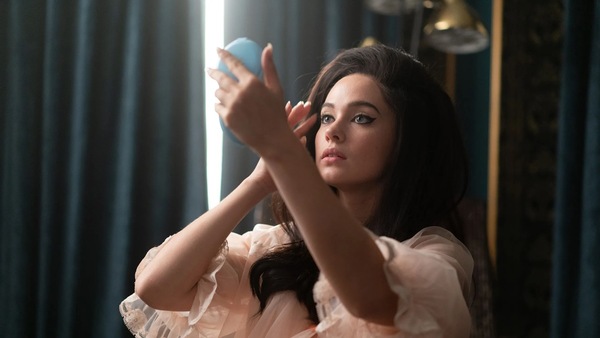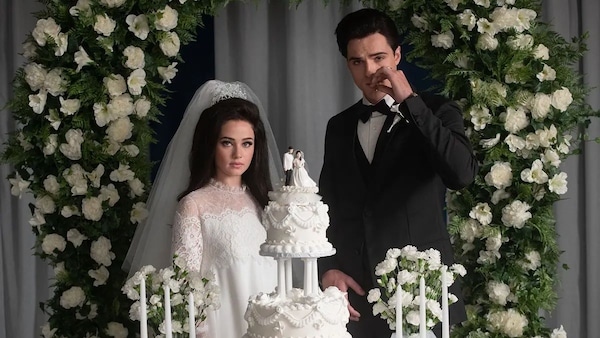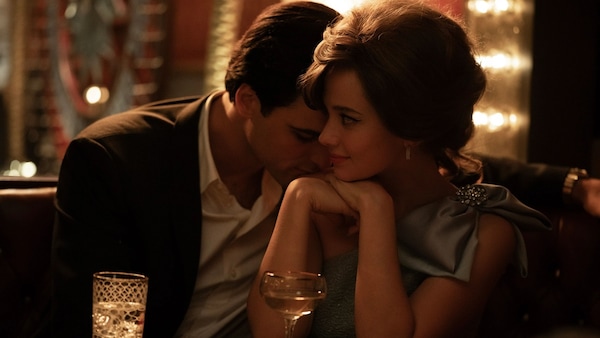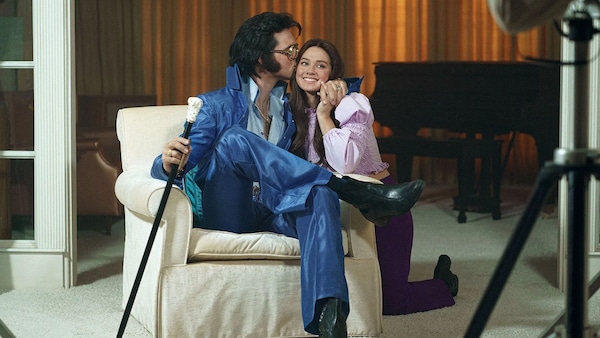Priscilla: Sofia Coppola’s Best Film In 20 Years Is An Enchanting Tale Of Lost Girlhood
This is #CineFile, where our critic Rahul Desai goes beyond the obvious takes, to dissect movies and shows that are in the news.

Last Updated: 05.00 PM, Dec 16, 2023
PRISCILLA is defined by the dichotomy between life and mythmaking. The film is at once beautiful and ugly, hollow and loaded, tender and tough, dreamy and nightmarish. It is a fairytale about a girl who goes on to marry the most eligible bachelor in the world; it is a tragedy about a child who is groomed by a gifted man-child. It is a sweeping love story that’s too good to be true; it is a twisted marriage story that’s too true to be good. It is a 1960s composition of celebrity, privilege and power; it is a 2023 deconstruction of patriarchy, abuse and isolation. It is a spare biographical drama of Priscilla Presley; it is the background of an unseen Elvis Presley biopic. It alludes to the music that shaped a culture; it is rooted in the silence that shaped a home.
Priscilla belongs to the Sofia Coppola multiverse of romantic custody. She is the lonely young wife of a celebrity photographer at a Tokyo hotel. She is the teen-aged and sexually repressed archduchess stifled by her husband’s courtiers at the court of Versailles. She is the still 12-year-old girl accompanying her Hollywood-star dad on a publicity trip to Europe and a gambling dash to Las Vegas. The film opens with a shot that brings to mind Greta Gerwig’s pedicured subversion of Barbie — an expensive rug absorbs Priscilla’s soon-to-be-high-heeled feet. Her eyeliner extends the depth of her gaze. She, too, becomes a utopian doll that wakes up to the whims of real-world existentialism. There are also shades of a young Diana’s seclusion in The Crown: She marries (older) Prince Charming only to realise that his palace is her birdcage. Marital bliss is an illusion that starts crumbling, and all that’s left are the decorated walls of history and royalty.

Priscilla is not so much an object of Elvis’ affection as she is an object in his gilded mansion. She dresses the way he wants her to, looks the way he likes her to, and sounds the way he needs her to. He returns, plays with her and leaves, all the while imploring her to keep the “home fires burning” and accept his infidelity with a pinch of gourmet salt. She hears his female fans cheer and scream outside the gate, almost envying them for how their ‘chase’ still exists, for how open they can be for someone they barely know. She waits, yearns and waits some more in pursuit of this broken fantasy. Being locked away in Graceland — Elvis’ sprawling estate in Memphis — becomes her identity. A trophy wife trapped in a transparent cabinet; a girl with nothing to show for everything.
Coppola shoots Graceland as a facade that hides the denigration of grace. Elvis and his entourage of buddies use it as their personal playground, combining guns, machines and boyish shenanigans, with Priscilla as a permanent spectator. If anything, the place feels like a predecessor of Neverland, the future estate of Priscilla Presley’s future son-in-law Michael Jackson, who — not unlike Elvis — became a sinister embodiment of the Peter Pan syndrome. We only see Lisa Marie Presley as an infant in the film, but Priscilla does throw some light on what the daughter of the king of rock and roll might have found in the king of pop. The treatment is telling, especially for the sadness it withholds.

Cailee Spaeny is captivating as the crown princess of captivity. She is not only worryingly good as a 14-year-old American girl living the adolescent dream, but also worryingly convincing as a young woman living through a pretty rendition of Stockholm Syndrome. She is willingly ‘abducted’ by him to a cave of smoke and mirrors. When she first sees him at a party in Germany, she seems to bottle those dizzying nerves — of meeting a global heartthrob — and spray it onto herself like perfume during the lows of their marriage. She struggles to comprehend the reality of desiring the man beyond his image, the lyrics behind the song. At some level, Spaeny also plays Priscilla Presley as someone in a perpetual cycle of roleplay. Priscilla’s formal greetings (“hello”), catholic roots and subservience suggest that she is willing to be everything from his little girl to his best friend to muse to his lover — but only if it means he can be less than Elvis Presley.
Jacob Elordi plays the man almost as a parody of the one Austin Butler fetishised in Baz Luhrmann’s flashy biopic. He unfolds like an aesthetic — a toxic kid with a talent for sound and showmanship. It’s a heady mix of predator and prey, where a daddy-issues-riddled Elvis remains blissfully oblivious of how manipulative and entitled he is. When he courts an underage Priscilla, it’s creepy for how normal it looks; he knows what he’s doing but he’s also horribly sincere about it. Elordi also says things like he knows they’ll elicit a gasp or two from a contemporary audience. The love is consummated on Elvis’ terms, never hers, because he turns her into someone he must conquer, not somebody he can have. When he asks her father for permission to take her away, you can sense a parallel tragedy about parents ‘selling’ their daughter and succumbing to the allure of cultural royalty. Elordi understands the big swing that Coppola takes in her translation of Priscilla Presley’s 1985 memoir — erasing the bridge between art and artist until there’s nowhere left to look. The result is a refreshing take on a much-fabled figure, one that concedes the stage to the consequences rather than the cause.

There’s a cruelty about the way the film gives itself to Priscilla Presley, as if it’s trying to prove that the parasocial equation at the core of this narrative reflects the relationship between modern film-making and troubled-artist stories. The blind spot is the same: We see what we want to in Elvis and John and Leonard and Bob, just like she sees what she needs to in him. The fear of dismantling the mirage mirrors the fear of losing ourselves. It’s like she trains herself to be camouflaged by her surroundings and unseen by her environment. Consequently, the characters don’t come of age; they wither of age. Emotions don’t emerge or converge; they get submerged. There’s no rift; there’s drift. When Priscilla ages, she grows — her skin bronzed, her eyes wiser, her hair calmer — through the shell of who she was. And when she leaves, a cover of I Will Always Love You sounds more like Joan Baez singing: It’s all come back too clearly / Yes I loved you dearly / And if you’re offering me diamonds and rust / I’ve already paid.
